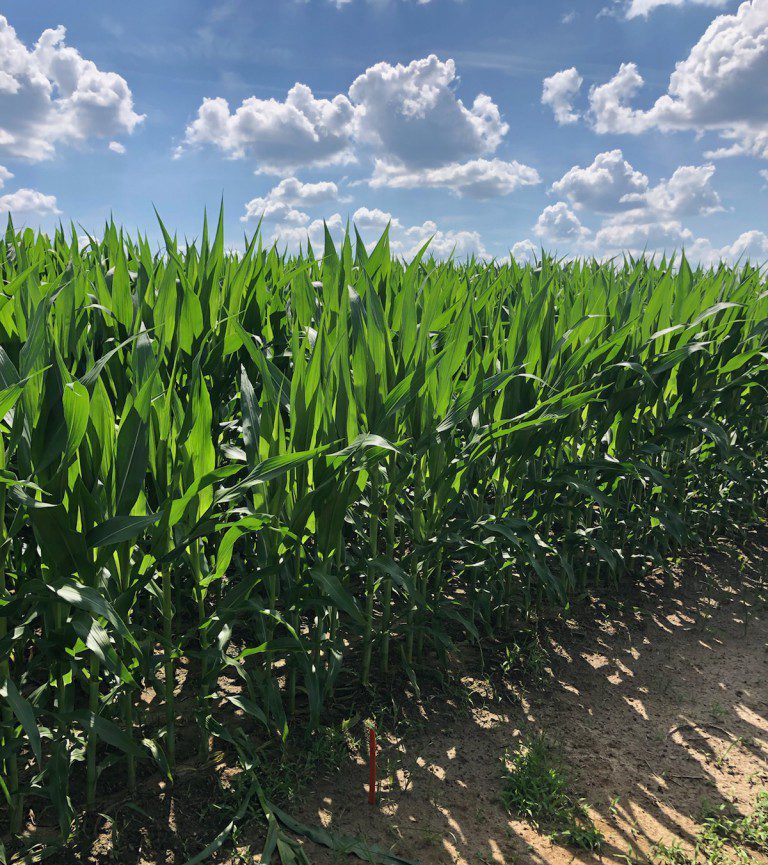Our earliest planted corn in the county is tasseling, and a lot more will reach that point in the next few week. Pollination is a critical period in corn growth and will dictate what kind of crop we will have. Interim grain agronomist, Rome Ethredge, goes into detail here:
Boy, I hate to see the high heat this early in the year. We are entering one of the most important weeks for our corn crop in many fields, pollination time. It’s a critical time in which each kernel must be pollinated. An amazing process occurs in which pollen from the tassels 12 feet high (often half a million pollen grains produced per plant) fall to the silks on the corn ear and travel down the silk to the kernel.
Several things can happen to disrupt this process, the worst of which are excess heat and the plant not getting enough water. We can’t do anything about the heat but we can water the corn if we have irrigation. At this stage the corn plant needs lots of water and the massive root system has been growing and expanding for 65 days so it can really take up the water. We have noticed in working with soil moisture sensors that we have a hard time getting enough water to the roots during this phase and time of year under normal circumstances. Another thing with corn irrigation is that we can easily get behind and its hard to catch up once soil moisture drops. This is all a worse situation the sandier your soil is as it can’t hold as much water per square foot.
Corn needs just over 2 inches a week at pollination time and with the forecast temperatures and dry air we will be loosing more than usual from the sprinkler to the soil level.
Temperatures over 95 can affect the plant’s pollen production and life, and worse is that we can get drying of the silks affecting their performance especially if the plant isn’t getting enough water.
How will heat affect younger corn? Corn grows best at lower temperatures and there’s no advantage from temperatures over 86. Remember that maximum kernel number around the ear is set before tassel time, so the plant needs to be healthy for the maximum number. We could also see shorter corn, with this fast heat unit accumulation.
As we approach tassel in many fields, another question I receive is whether or not we need to spray a fungicide. I personally have not seen anything of concern so far this year. It is certainly not anything like this time last year, and the rest of the state is similar. Dr. Bob Kemerait explains:
- Southern Corn Rust has NOT been found in Georgia this year; we have had a little common rust discovered by a consultant in SW Georgia; however common rust is not a problem for us. Also, Northern Corn Leaf Blight (low levels) have been found by Rome Ethredge in SW Georgia and Northern Corn Leaf SPOT has been found in Wayne County. At the levels of Northern Corn Leaf Blight found by Rome, I would not spray; I would not spray for northern corn leaf SPOT.
- The corn crop for our earliest planting dates is approaching tassel. Given no known southern rust in the state and the VERY HOT AND DRY conditions over the next two weeks, a fungicide spray on the corn is not urgent. Some growers will do it for “insurance” and I don’t have a problem with that; so long as all know that risk to disease in corn is fairly low now.
